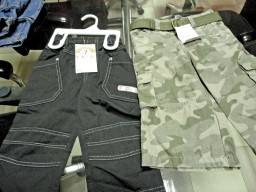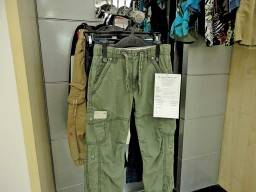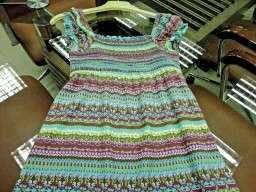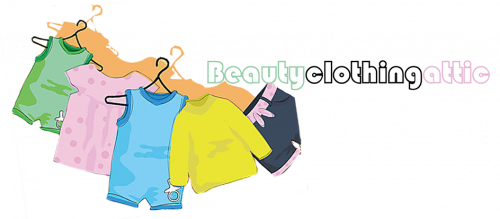
Intrinsically known for menswear manufacturing, a good number of garment manufacturers have stepped into kidswear segment in Bangladesh. Brands like H&M, Sainsbury’s, Zara, Esprit, to mention a few, are sourcing good volumes, with many having dedicated suppliers for the category. Apparel Online Bangladesh met up with three companies which are majorly into kids garment manufacturing, namely Bando Design, Esquire Group and TSN Clothing, to understand the challenges of working in kidswear…
Though apparently simple, kidswear is a highly critical product category with utmost focus on technical details and safety issues, because of which most buyers prefer working with suppliers who can dedicate lines to them. Buyers are also very careful in selecting a vendor who understands the nuances of manufacturing kidswear. In fact, a great deal of consideration and effort goes into designing kids’ clothes that are smart, safe and functional – all at the same time, so it is important that the manufacturer is also clued in on the norms of kidswear. It’s often the little details that make all the difference.


Among the leading players in kidswear, Bando Design Ltd., a unit of US $ 100 million Sterling Alliance Group, runs a factory where 95 per cent of the products are dedicated to the Swedish clothing giant H&M. Established in the year 2005, the factory of 15 lines and with 1100 machines, produces 5.5 million pieces a year; a majority of which is kidswear. “We are manufacturing only woven bottoms for H&M kids. The retailer has around seven key styles in bottoms and Bando Design is producing two of the styles on a regular basis,” says Asela Fernando, Executive Director, Bando Design.
Though Bando Design does not have any formal agreement with H&M as a dedicated supplier, but the service levels that the company has delivered over the past six years has made them one of the preferred suppliers in kidswear. “When we started this unit with 8 lines and 480 machines, H&M took all the lines, so we increased the lines, but they kept taking over the lines because our quality and OTD (On Time Delivery) has been bang on,” says Fernando. In fact, Bando Design has the impeccable record of – ‘no air freights’, ‘no discounts’, ‘no claims’, spanning the six years it has worked with H&M, achieving an enviable 99 per cent hit on quality and OTD.
One of the biggest challenges working with H&M, which makes it difficult for many exporters to associate with them, is their complex sourcing module. “It is very difficult for factories to do H&M products because H&M gives one style, which has to be shipped to 30-36 countries. The whole manufacturing process from cutting to packing needs to be coordinated. When you are talking about 1 million pieces and 35 different countries, you have to ship eight different sizes and five to ten different POs with different price stickers, the planning right from the cutting stage has to be immaculate, as different countries also have different delivery dates. If you mess up with the cutting you will never meet the delivery dates. We are well organized in that sense,” says Fernando.
One of the biggest concerns in kidswear is safety and every brand has clear norms to be followed. H&M’s focus on quality and child safety includes ensuring that children are protected against sharp edges through the provision of a chin guard on jacket zippers. They are also particular that there are no drawstrings around necks or hoods. Since children have more sensitive skin, particular care is also taken regarding the use of chemicals and nickel. All conceivable hazards and health risks are tested including button strength tests, nickel tests, chemical and flamatory tests including pH testing.
[bleft] US and Europe are major buyers of kidswear for Bangladesh, though Europe is comparatively bigger than US in terms of both value and volumes. If we take babies wear (0-5 years), Bangladesh exported merchandise worth US $ 75.17 million (January to May 2012). On the other hand, EU in first quarter (January-March 2012), imported babies wear worth Euro 69.46 million. EU thus shows an increase of 11.42 per cent in value while volumes were up by 0.14 per cent. [/bleft]
Because of the unrelenting focus on safety, H&M has continued to use Bando Design for its kidswear despite the fact that the company is also equipped to produce ladies and menswear as its setup can handle fabrics from poplins till 14 oz denims. “Very few companies can handle kidswear as a lot of commitment is required by the management while manufacturing it and since we are abiding with all the norms stringently and even have an in-house lab for testing, we are a preferred supplier in this category,” reasons Fernando. Bando Design has been certified as a self-reliant supplier by H&M and has its own independent quality team that is responsible for doing quality checks for garments produced for H&M, though H&M conducts unannounced audits to check on the quality and compliance issues at regular intervals.
Agreeing to safety as of utmost importance when it comes to children’s wear, Ehsanul Habib, Managing Director, Esquire Group, a US $ 60 million company, expecting US $ 20 million increase in top line in 2013, shares “Safety procedures such as needle detection and needle control policy are an ‘absolute must’ for each and every garment in kidswear. Most of the production houses in Bangladesh that cater to kidswear are well equipped with the latest machinery and technology to make sure that the garment quality and child safety is not compromised at any level.” A vertically integrated company, Esquire has 50 production lines with a capacity to produce over three million pieces per month of basic garments, and 40 per cent of its capacity is dedicated to kidswear to brands like Zara and Esprit. “As we do more of embellishments and embroideries, we roughly produce 55-60,000 pieces per day which includes a lot of girls’ products, boys’ polos along with men’s polos. We are specialists in tops,” adds Habib, who has six units (one floor with nine lines is considered as one unit). To offer competitive prices by enhancing its efficiencies and productivity, the company has hired an American consultancy firm TBM which has implemented the Kaizen and Lean manufacturing systems.
[bleft] H&M’s overall sourcing from Bangladesh is around 390 million pcs. per annum and it is targeting at 500 million pieces by 2015. The brand has 5000 stores right now and is planning to open one store every day for the next two years. [/bleft]
While the FOB rates in kidswear are a bit low, since the fabric consumption is low the volumes seem to make up for it. Also there are fewer styles which are complicated. On an average, the FOBs for children’s wear can be anything between US $ 2.5 and US $ 10, depending on the garment. Basically a tech-pack business, some companies like Esquire have now started offering design inputs to get better FOBs. “We don’t want to be competing in the market on price, so we thought of going into a different direction; we have an in-house design team which develops collection for the buyers. This gives us an edge over others as we are now not just converters. Encouraged by the response we have received from the buyers, we hope that at least 40 per cent of our production should come from our own design team by next year,” says Habib.
[bleft] “We have an in-house design team that develops collection for the buyers. This gives us an edge over others as we are now not just converters.” – Ehsanul Habib Managing Director, Esquire Group [/bleft]
Being a dedicated vendor has both its advantages and disadvantages, feels Fernando. However advantages are more as one works in partnership and doesn’t need to invest time and money on marketing… business just flows in. “H&M blocks our capacities, there is commitment; there are times when H&M asks us to reduce price by few cents but then they ensure additional orders; at times we sacrifice 20 cents and at times they give us 20 cents more; it’s all in the relationship,” avers Fernando. The risk of being a dedicated supplier is apparently putting all the eggs in one basket. “If I lose H&M today, I will not be able to find a buyer like H&M overnight; but then H&M will also find it difficult to develop a factory like us overnight,” concludes Fernando.

Leave a Reply